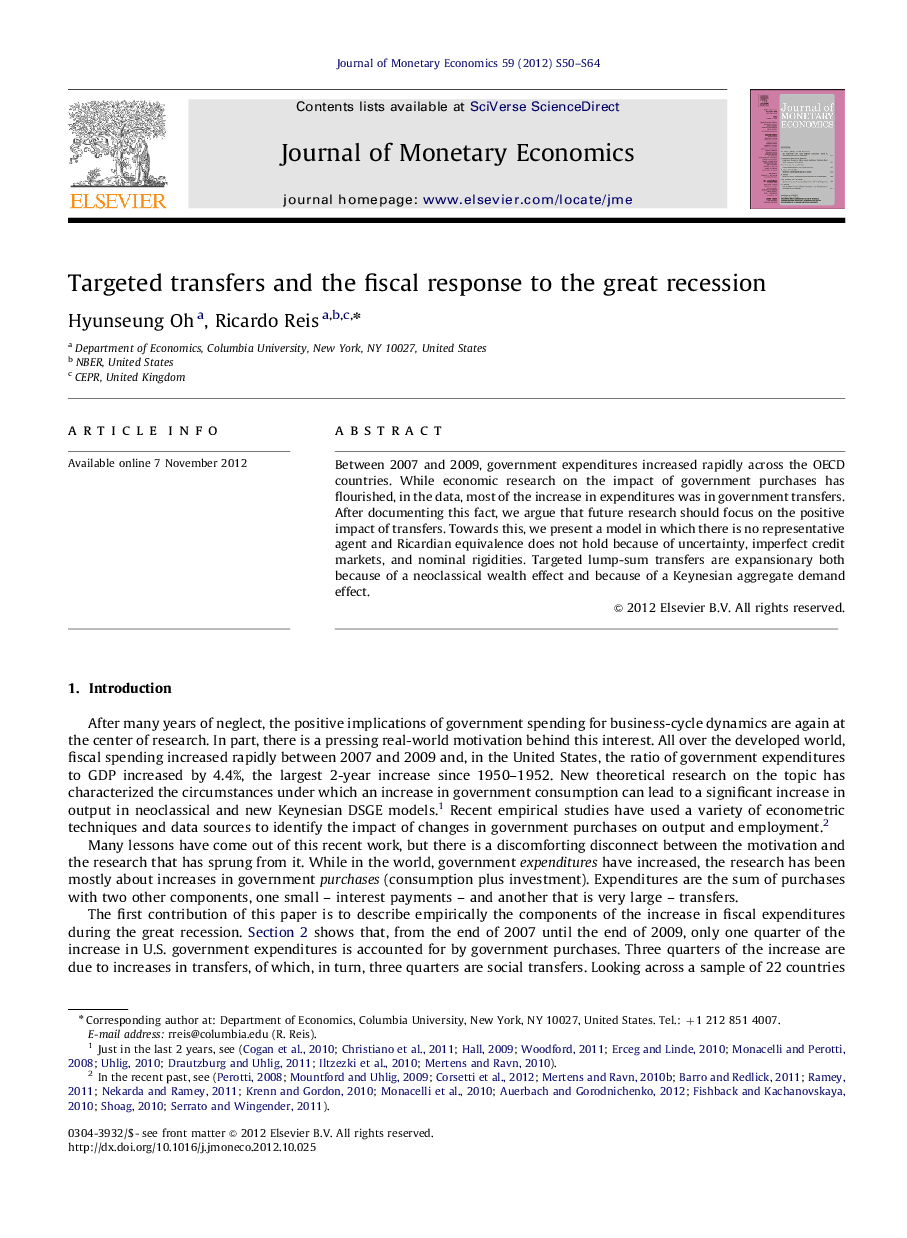| Article ID | Journal | Published Year | Pages | File Type |
|---|---|---|---|---|
| 967743 | Journal of Monetary Economics | 2012 | 15 Pages |
Between 2007 and 2009, government expenditures increased rapidly across the OECD countries. While economic research on the impact of government purchases has flourished, in the data, most of the increase in expenditures was in government transfers. After documenting this fact, we argue that future research should focus on the positive impact of transfers. Towards this, we present a model in which there is no representative agent and Ricardian equivalence does not hold because of uncertainty, imperfect credit markets, and nominal rigidities. Targeted lump-sum transfers are expansionary both because of a neoclassical wealth effect and because of a Keynesian aggregate demand effect.
► Most of the increase in government expenditures in 2007–2009 was in government transfers. ► Spending on retirement, disability, and medical care increased as much as government purchases. ► In a new model, targeted lump sum transfers are expansionary through two channels. ► First, because the marginal worker is more willing to work to pay for higher transfers to those less fortunate. ► Second, because transfers from households with a low MPC to those with a high MPC boosts aggregate demand.
